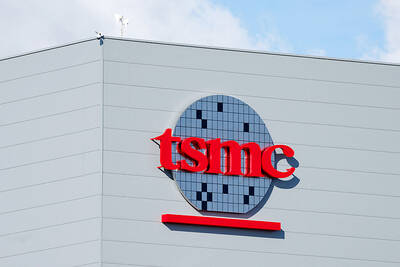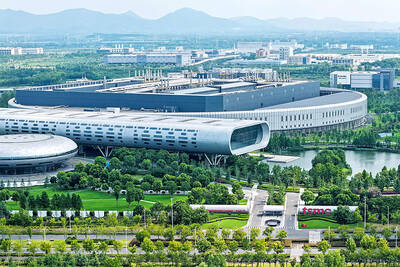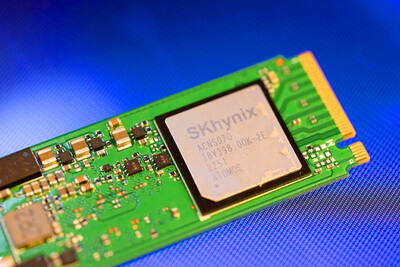Taiwan’s ranking in global information technology (IT) competitiveness dropped to 15th place this year from second place last year largely because of a worsening research and development environment, an annual study by the Economist Intelligence Unit (EIU) showed.
The London-based researcher ranked the US as the world’s top performer, with a score of 78.9, because its educational environment continues to develop high-quality technology professionals.
The study, now in its third year, compares the IT environment in 66 economies. It was sponsored by the Business Software Alliance (BSA).
Finland, Sweden, Canada and the Netherlands were ranked second, third, fourth and fifth respectively this year, in line with the degree to which they enable IT companies to compete effectively.
BSA vice president Jeffery Hardee said the IT sector remains an important engine of growth in the Asia-Pacific region.
“Economies that are taking steps to stimulate technology sector output are placing themselves in a strong position to accelerate economic recovery,” Hardee said.
With broadband access becoming a prerequisite for many parts of the IT sector, economies with widespread broadband penetration have a big competitive advantage over those where the infrastructure is lacking, he said.
Taiwan’s drop placed it behind Singapore (9) and Japan (12), but ahead of South Korea (16), Hong Kong (21) and China (50).
“Singapore ranked third in the category of innovation environment, owing to its strong support for R&D and its IT firms’ record of patenting innovations,” the EIU said in a press release. “Taiwanese, South Korean and Japanese firms also remain the most prolific generators of IT patents in Asia.”
Taiwan and South Korea, however, saw sharp declines in their rankings largely because of the deterioration in their R&D environment scores, the EIU said.
The EIU report, Resilience Amid Turmoil: Benchmarking IT Industry Competitiveness 2009, measures competitiveness of the IT industry based on 26 quantitative and qualitative indicators grouped under six main categories: overall business environment, IT infrastructure, human capital, legal environment, R&D environment and support for IT industry development.
The Ministry of Economic Affairs said yesterday that Taiwan’s plunge in the rankings was due to changes in two indicators and the adjustment of indicator weights.
This year’s study used available data sourced from the European Patent Office (EPO) to score the IT patents indicator in the R&D environment category, rather than the number of patent applications to the US Patent and Trademark Office (USPTO), which was used in the past, the ministry said.
“EIU only selected patents of computers and office equipment for assessment, while overlooking those of personal navigation devices and smartphones in which Taiwan enjoys a competitive edge,” the statement said.
Taiwan scored 12.5 points less than last year in the overall ranking because of this change, the ministry said.
The addition of the quality of IT staff as a new indicator to gauge the competitiveness of human capital also hurt Taiwan’s ranking, which was 18.1 points lower than last year’s, the ministry said.
Meanwhile, the Council for Economic Planning and Development said yesterday that the nation’s information & communications technology (ICT) industry faces rising challenges from emerging economies.
To help local ICT firms improve innovation capability and technology upgrading, the council said the Cabinet has proposed investing NT$12.7 billion (US$392.4 million) to improve ICT infrastructure and has drawn up bills aimed at raising competitiveness.

Taiwan Semiconductor Manufacturing Co (TSMC, 台積電) secured a record 70.2 percent share of the global foundry business in the second quarter, up from 67.6 percent the previous quarter, and continued widening its lead over second-placed Samsung Electronics Co, TrendForce Corp (集邦科技) said on Monday. TSMC posted US$30.24 billion in sales in the April-to-June period, up 18.5 percent from the previous quarter, driven by major smartphone customers entering their ramp-up cycle and robust demand for artificial intelligence chips, laptops and PCs, which boosted wafer shipments and average selling prices, TrendForce said in a report. Samsung’s sales also grew in the second quarter, up

On Tuesday, US President Donald Trump weighed in on a pressing national issue: The rebranding of a restaurant chain. Last week, Cracker Barrel, a Tennessee company whose nationwide locations lean heavily on a cozy, old-timey aesthetic — “rocking chairs on the porch, a warm fire in the hearth, peg games on the table” — announced it was updating its logo. Uncle Herschel, the man who once appeared next to the letters with a barrel, was gone. It sparked ire on the right, with Donald Trump Jr leading a charge against the rebranding: “WTF is wrong with Cracker Barrel?!” Later, Trump Sr weighed

LIMITED IMPACT: Investor confidence was likely sustained by its relatively small exposure to the Chinese market, as only less advanced chips are made in Nanjing Taiwan Semiconductor Manufacturing Co (TSMC, 台積電) saw its stock price close steady yesterday in a sign that the loss of the validated end user (VEU) status for its Nanjing, China, fab should have a mild impact on the world’s biggest contract chipmaker financially and technologically. Media reports about the waiver loss sent TSMC down 1.29 percent during the early trading session yesterday, but the stock soon regained strength and ended at NT$1,160, unchanged from Tuesday. Investors’ confidence in TSMC was likely built on its relatively small exposure to the Chinese market, as Chinese customers contributed about 9 percent to TSMC’s revenue last

LOOPHOLES: The move is to end a break that was aiding foreign producers without any similar benefit for US manufacturers, the US Department of Commerce said US President Donald Trump’s administration would make it harder for Samsung Electronics Co and SK Hynix Inc to ship critical equipment to their chipmaking operations in China, dealing a potential blow to the companies’ production in the world’s largest semiconductor market. The US Department of Commerce in a notice published on Friday said that it was revoking waivers for Samsung and SK Hynix to use US technologies in their Chinese operations. The companies had been operating in China under regulations that allow them to import chipmaking equipment without applying for a new license each time. The move would revise what is known